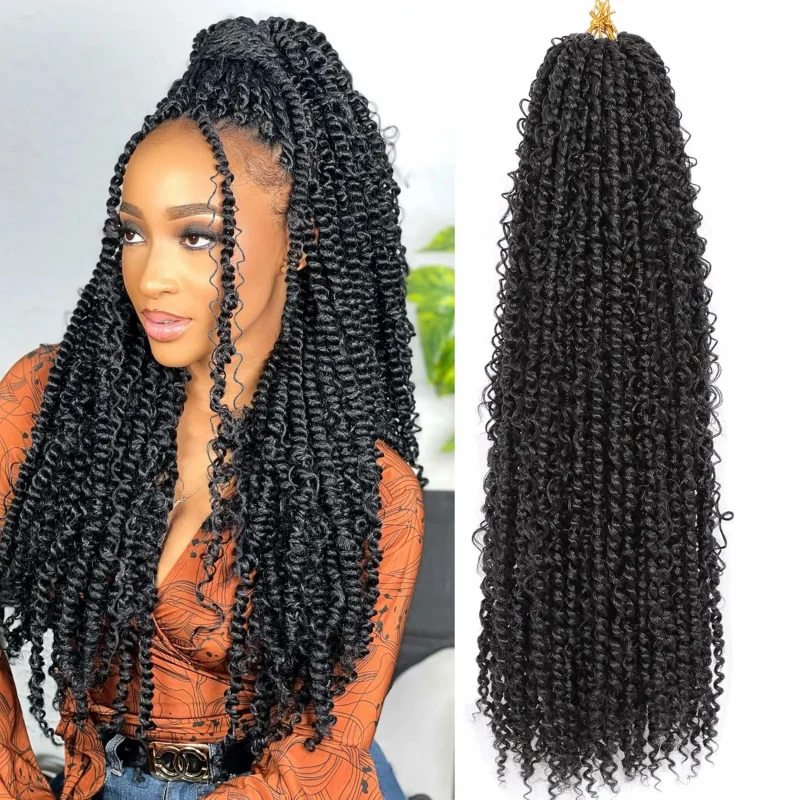An Analytical Study on Twists vs Braids: Determining the Best Option for Different Hair Types
| Main Topic | Subtopics |
|---|---|
| Introduction | What Are Twists and Braids? Why Compare Twists and Braids? Overview of Hair Types |
| The Basics of Twists | Defining Twists Popular Types of Twists Advantages of Twists Disadvantages of Twists |
| The Basics of Braids | What Are Braids? Common Styles of Braids Benefits of Braids Drawbacks of Braids |
| Twists vs Braids: A Style Analysis | Ease of Installation Longevity and Maintenance Styling Versatility |
| Hair Health Implications | Impact on Hair Growth Scalp Care Differences Managing Breakage Risks |
| Twists and Braids for Natural Hair | Why Natural Hair Loves Twists Benefits of Braids for Natural Hair Maintenance Tips |
| Twists and Braids for Fine Hair | Best Styles for Fine Hair Minimizing Tension Balancing Volume and Length |
| Twists and Braids for Coarse Hair | Styling Options for Coarse Hair Preventing Hair Damage Suitable Products to Use |
| Cultural Significance | Historical Roots of Twists Traditional Role of Braids Modern Interpretations |
| Cost Considerations | Upfront Costs Maintenance Expenses Budget-Friendly Alternatives |
| Twists vs Braids for Active Lifestyles | Best Styles for Sports Enthusiasts Durability During Workouts Quick-Fix Options |
| Kids and Protective Styles | Child-Friendly Twists Easy Braids for Young Hair Balancing Aesthetics and Comfort |
| Professional and Social Settings | Work-Appropriate Twists Elegant Braids for Formal Events Blending with Personal Style |
| Environmental Factors | Weather-Resistant Styles Managing Humidity Seasonal Care Tips |
| Final Comparison and Recommendations | Twists vs Braids: Who Wins? Key Takeaways for Different Hair Types Making Your Decision |
| FAQs | Answers to Common Questions |
What Are Twists and Braids?
Twists and braids are two of the most beloved protective hairstyles in the natural hair community. Twists involve intertwining two strands of hair, while braids use three or more strands woven together. Both styles not only protect the hair but also allow for creativity and self-expression.
Why Compare Twists and Braids?
The debate between twists and braids often boils down to personal preference, hair type, and lifestyle needs. This article aims to dissect these styles, helping you determine the best option for your unique hair type.
Overview of Hair Types
Understanding your hair’s texture, density, and porosity is crucial when selecting a protective style. From fine and straight hair to coarse and coily textures, twists and braids cater to different needs.
The Basics of Twists
Defining Twists
Twists are created by dividing hair into sections and intertwining two strands from root to tip. They can be installed with or without extensions, offering a natural look that highlights the hair’s texture.
Popular Types of Twists
- Senegalese Twists: Sleek and elegant, ideal for formal occasions.
- Marley Twists: Fuller and coarser, perfect for a voluminous look.
- Passion Twists: Trendy and carefree, often styled with loose, wavy ends.
Advantages of Twists
- Lightweight and comfortable.
- Easy to install and remove.
- Versatile styling options.
Disadvantages of Twists
- Shorter lifespan compared to braids.
- Prone to unraveling, especially on finer hair.
- Requires regular maintenance to keep neat.
The Basics of Braids
What Are Braids?
Braids involve interlacing three or more strands of hair to create intricate patterns. This timeless style ranges from simple to complex designs.
Common Styles of Braids
- Box Braids: Iconic and versatile, often using extensions for added length and volume.
- Cornrows: Close-to-scalp braiding that’s great for low-maintenance looks.
- Ghana Braids: Large, thick braids that are stylish and protective.
Benefits of Braids
- Long-lasting durability.
- Protects hair during growth phases.
- Suitable for intricate designs and patterns.
Drawbacks of Braids
- Time-consuming installation.
- Can cause tension on the scalp if installed too tightly.
- Heavier styles may strain finer hair types.
Twists vs Braids: A Style Analysis
Ease of Installation
Twists are generally quicker to install, taking 2-4 hours depending on the hair length and thickness. Braids, especially intricate styles, may require 5-8 hours.
Longevity and Maintenance
Braids tend to last longer, often up to 8 weeks with proper care, while twists typically need redoing after 4-6 weeks. Both styles benefit from regular moisturizing and scalp care.
Styling Versatility
While both styles offer a range of creative options, braids are better for detailed designs, whereas twists excel in achieving a more natural, relaxed look.
Hair Health Implications
Impact on Hair Growth
Protective styles like twists and braids reduce manipulation, aiding in hair retention and growth. However, improper installation can lead to tension and breakage.
Scalp Care Differences
Twists allow for easier access to the scalp, making it simpler to cleanse and moisturize. Braids, while offering more longevity, may require more effort to maintain scalp health.
Managing Breakage Risks
Both styles can strain the hairline if not installed carefully. Regular maintenance and avoiding overly tight styles are key.
FAQs
1. Are twists or braids better for hair growth?
Both styles protect hair, but proper installation and care matter more than the style itself.
2. Which style lasts longer?
Braids typically last longer, often up to 8 weeks, compared to twists.
3. Are twists easier to install than braids?
Yes, twists are generally quicker and easier to install.
4. Can I wash my hair with twists or braids?
Yes, but you’ll need to use diluted shampoo and focus on the scalp.
5. Do twists damage hair?
Not if installed and maintained properly. Avoid tight twists to prevent breakage.
6. What’s more versatile: twists or braids?
Braids offer more intricate styling options, while twists provide a softer, natural look.
Conclusion
Twists and braids are versatile, protective hairstyles with unique benefits and drawbacks. Your choice should align with your hair type, lifestyle, and aesthetic preferences. Whether you’re looking for quick styling or a long-lasting look, both styles can enhance your natural beauty and promote healthy hair.
